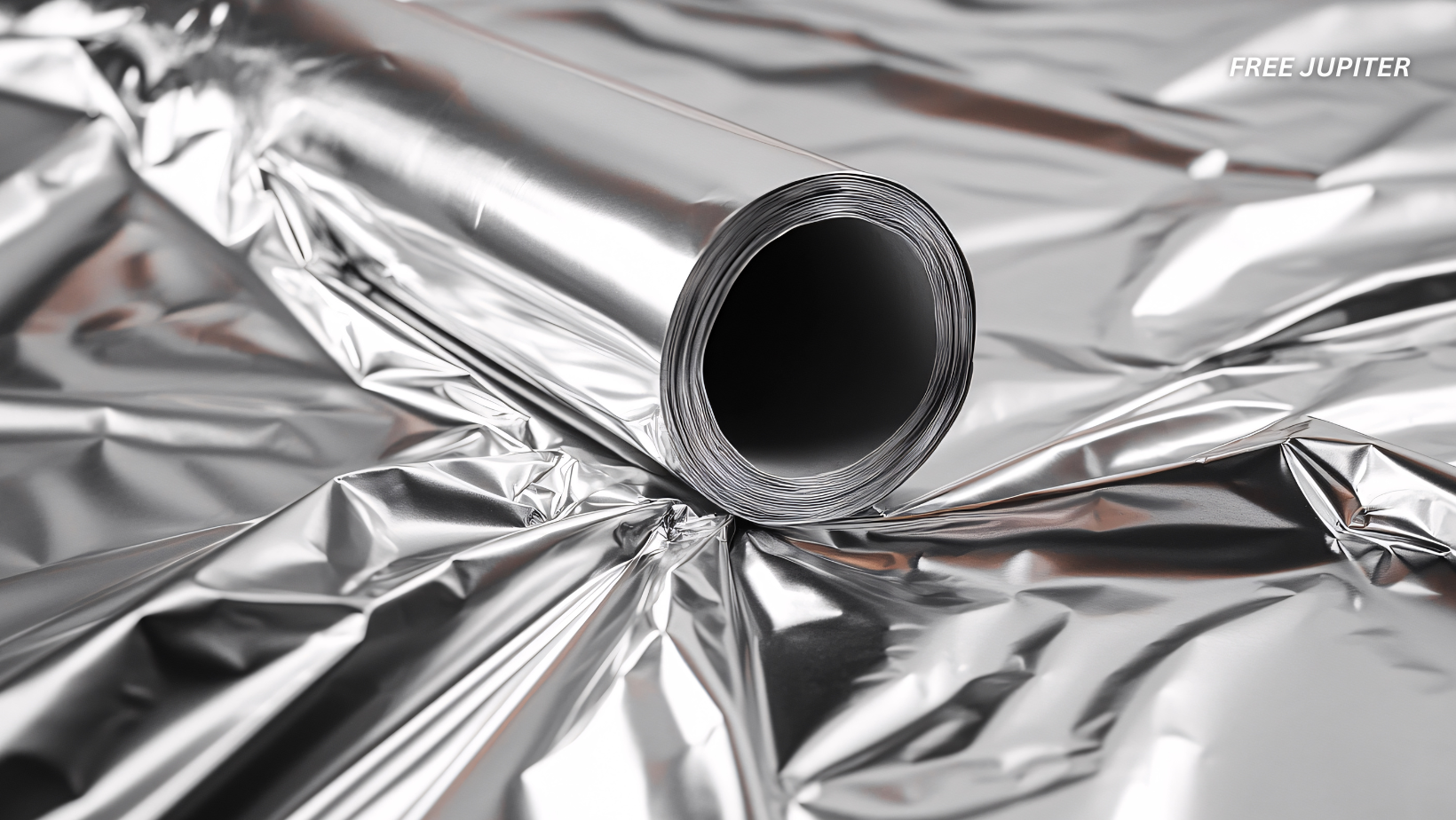Friendly Note: FreeJupiter.com shares general info for curious minds 🌟 Please fact-check all claims—and always check health matters with a professional 💙
Aluminum foil is undeniably one of the most ubiquitous items in kitchens worldwide. Its shiny surface and pliability make it a go-to for wrapping leftovers, lining pans, and even crafting impromptu cooking vessels. Yet, despite its widespread popularity, aluminum foil is not without its quirks and limitations. Using it incorrectly can lead to compromised food safety, diminished culinary results, and even damage to your appliances.
In this comprehensive guide, we’ll explore the circumstances where aluminum foil is not the ideal choice and suggest safer, more effective alternatives. By understanding these nuances, you can continue to enjoy the convenience of foil without risking your health or the quality of your meals.
The Many Faces of Aluminum Foil: Versatile but Not Invincible
Before diving into the “don’ts,” it’s worth appreciating why aluminum foil has earned its place in kitchens. It’s lightweight, inexpensive, and an excellent conductor of heat. It protects food from moisture loss, prevents contamination, and simplifies cleanup. However, these very properties can sometimes work against you, especially when foil interacts with certain foods or cooking methods.
1. The Acidic Food Conundrum: Why Foil and Acid Don’t Mix
One of the most important rules to remember is to avoid wrapping or storing acidic foods in aluminum foil. Acidic ingredients include tomatoes, citrus fruits like lemons and limes, vinegar, and fermented foods such as sauerkraut. When these foods come into contact with aluminum, a chemical reaction occurs that can cause the foil to corrode or discolor.
The acid in these foods can break down the aluminum surface, leading to the release of tiny amounts of aluminum into the food. This not only imparts a metallic or bitter taste but may also pose health concerns. While the body can handle small quantities of aluminum, excessive intake has been linked to digestive discomfort and neurological issues in some studies.
Imagine marinating chicken breasts in a lemon juice and oil mixture and wrapping them in foil. Over time, the lemon’s acidity can cause the foil to degrade, potentially altering the flavor and safety of your meal. Instead, opt for glass or ceramic containers that are non-reactive and preserve the integrity of your food.
Read more: Fiber That Is Found In Everyday Foods Can Help Remove Forever Chemicals From Your Body
2. The Pitfalls of Long-Term Storage in Foil
It might be tempting to wrap leftovers tightly in foil and stash them in the fridge for days, but this is not advisable for several reasons.
Aluminum foil does not provide an airtight environment. Air can seep in, allowing bacteria and mold spores to contaminate your food. This exposure accelerates spoilage and increases the likelihood of foodborne illnesses.
If the leftover food is acidic or salty, the risk of aluminum leaching into the food increases the longer it is stored. This slow migration can affect both taste and safety.
For storing leftovers, airtight containers made from glass or BPA-free plastic are superior choices. They maintain freshness, prevent contamination, and eliminate the risk of aluminum transfer.
3. Baking with Foil: A Recipe for Uneven Results
Aluminum foil’s excellent heat conduction can be a double-edged sword in the oven.
When baking cookies, pastries, or other delicate items, lining your baking sheets with foil can cause the bottoms to brown too quickly or even burn. This is because foil transfers heat directly and intensely, unlike parchment paper or silicone mats, which distribute heat more evenly.
Regular foil is thin and prone to tearing, which can cause dough or batter to stick to the pan, ruining your baked goods and making cleanup harder.
If your recipe includes acidic ingredients, such as lemon zest or juice, baking on foil can impart an unwanted metallic taste.
Silicone baking mats are reusable, non-stick, and provide gentle, even heat, making them ideal for baking. Parchment paper is another excellent option that prevents sticking and browning issues without introducing metallic flavors.
4. The Microwave and Aluminum: A Dangerous Duo
Metal objects and microwaves are a recipe for trouble. Aluminum foil, being metal, should never be used inside a microwave oven.
Microwaves cause metal to spark, potentially igniting fires or damaging the appliance. Wrapping a potato in foil before microwaving, for example, can lead to dangerous sparks.
Instead of foil, use microwave-safe lids, parchment paper, or paper towels to cover dishes and prevent splatters. These materials allow steam to escape safely while keeping your microwave clean.
Read more: Woman Cuts Out Ultra-Processed Food For A Week, And Is Shocked At What Happened To Her Body
5. High-Heat Cooking: Know the Limits of Foil
Aluminum foil is often praised for its ability to withstand heat, but it has its boundaries.
While foil can handle typical oven temperatures, prolonged exposure to very high heat—especially above 400 degrees Fahrenheit—can cause it to weaken and degrade. This is particularly true when foil is in direct contact with food or exposed to open flames on a grill.
As foil breaks down, small amounts of aluminum can migrate into your food. Occasional consumption is unlikely to cause harm, but repeated exposure may lead to accumulation in the body, which is a concern for individuals with kidney problems.
Some manufacturers offer heavy-duty foil specifically designed for grilling, which can withstand higher temperatures and resist tears. Even so, it’s best to use these products judiciously and avoid prolonged direct contact with acidic or salty foods.
6. The Dangers of Lining Ovens and Grills with Foil
Many home cooks line the bottom of their ovens or grills with foil to catch drips and spills, but this practice can backfire.
Ovens and grills rely on proper airflow for even cooking. Foil can block vents and disrupt this circulation, leading to uneven heating and longer cooking times.
Foil can scratch oven surfaces and damage heating elements. In gas ovens, it can interfere with flames, potentially causing unsafe conditions.
Grease and food particles can accumulate on foil, increasing the risk of flare-ups or fires. This is especially dangerous in grills where open flames are present.
Use oven-safe drip pans or grill trays designed to catch drips without obstructing airflow. Regular cleaning of your appliances also reduces the need for protective liners.
Additional Considerations: Aluminum Exposure Beyond the Kitchen
Aluminum is present not only in foil but also in everyday items like some baking powders and medications. While the body typically eliminates small amounts efficiently, excessive exposure may pose health risks, particularly for those with impaired kidney function.
By minimizing unnecessary aluminum intake—especially from food contact materials—you can reduce potential health concerns.
Recycling and Reusing Aluminum Foil: Best Practices
Aluminum foil is recyclable, which is excellent for environmental sustainability. However, there are some guidelines to follow:
- Reuse When Possible: Foil can be reused if it’s clean and free from food residue. Avoid reusing foil that has been in contact with raw meat or seafood to prevent cross-contamination.
- Cleaning Before Recycling: Rinse foil to remove food particles before recycling. Balling it up helps recycling facilities process it more efficiently.
- Check Local Programs: Not all recycling centers accept aluminum foil, so verify with your local waste management services.
Read more: Natural Foods That Deliver Magnesium Better Than Supplements
Final Thoughts: Use Aluminum Foil Wisely for Health and Culinary Success
Aluminum foil remains a valuable kitchen tool when used appropriately. Understanding its limitations and potential risks allows you to make informed choices that protect your health and enhance your cooking.
Whenever possible, consider alternatives like glass containers for storage, parchment paper or silicone mats for baking, and microwave-safe coverings for reheating. These options often provide safer, more reliable results without sacrificing convenience.
By respecting the boundaries of aluminum foil’s use, you can continue to enjoy its benefits while avoiding hidden pitfalls that could affect your food’s safety, flavor, and your overall well-being.
Disclaimer: The information in this article is for general informational purposes only and is not medical advice. We are not doctors, and this website is run as a family hobby project. Always consult a qualified healthcare professional before making decisions about your health. Please fact-check any claims and use this content as a starting point, not a substitute for professional guidance.










